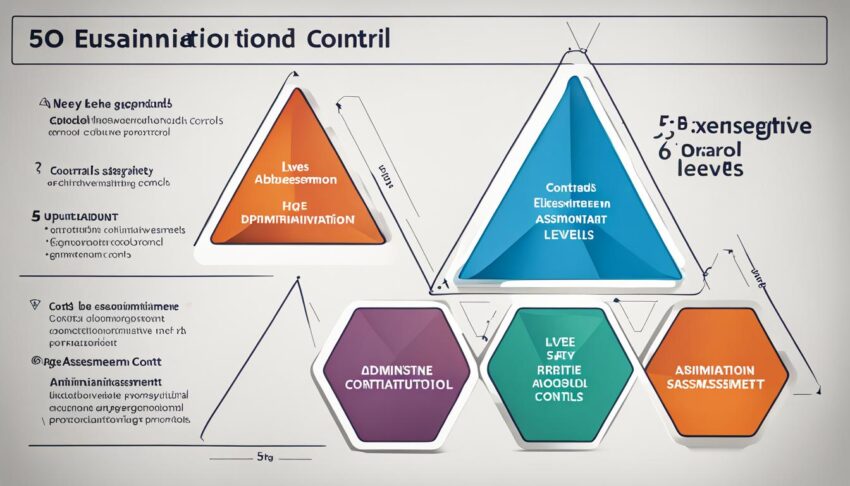Hammam Elmahi
Introduction
One of the crucial concepts to digest is the hierarchy of control, which is useful when occupational safety and health practitioners try to estimate the risk of a specific activity, in other words, it is used in risk assessments.
Hierarchy of control is important for NEBOSH IG learners; it is practically used in the arrangement part of organisation’s health and safety policy. When we record the practical risk assessment (IG2) for a workplace, we use this hierarchy to order the additional controls of a specific risk. Beware! if you haven’t written the control measure in the hierarchy order, you might fail the exam.
The hierarchy of controls consists of elimination, substitution, engineering control, administrative control, and Personal protective equipment. Here I will explain these five levels with practical examples.
1- Elimination.
It is the first and the best control of all hazards, if you eliminate the hazards that means you remove them from the workplace. I explain that mathematically by reducing the likelihood and the consequences to Zero. A clear example of that is outsourcing, if we have a hazard of cement dust in the construction workplace, we can simply purchase ready-mix cement from an outsourced company. That will eliminate the cement duct in that location.
In business language, outsourcing risk is an example of transferring the risk, as the risk will still be there for other company, but it will be morally acceptable if that company have better controls for the cement dust.
2- Substitution.

Most of the time it might be difficult to eliminate the hazard from a workplace because it would not be economically feasible. So, we can move a level down finding a way to substitute the hazardous situation or material with another, the new situation of material must be safe or safer than the previous one.
Substitution techniques example can be applied in excavation activities in a buried services area, you can use manual excavation instead of using a heavy construction excavator. In this example, the consequences are almost the same but using manual excavation has a lower incident likelihood than excavator.
3- Engineering control
The third level in the hierarchy of control is to design control to remove the hazard from the workers. There is a plethora of engineering control examples to manage the hazards at workplaces, take a car seatbelt as an example, it is designed to reduce the consequences of car accidents. Another example involves isolation and insulation techniques like soundproof acoustic heaven for noise hazards and guards for moving or sharp moving parts.
In electrical systems, earthing and RCDs are systems and devices that can be considered as engineering controls for hazards
.
4- Administrative control
At this level, you must consider the management policy and procedures to control workplace hazards and hazardous events. It comes in the shape of rules and steps that must be followed by the worker.
Practically administrative controls include creating a safe system of work which is defined as the safe way of conducting a certain activity, another example is introducing a permit-to-work procedure, which is usually used for high-risk works such as working in a confined space, with electricity and working at high. Frequent inspection, auditing and review are also examples of administrative control.
As it is based on human behaviour, its success is based on organisational cultural positivity, which can be improved by high management commitment, training and tolerance toward occupational safety and health violations.
5- PPE
Personal protective equipment is well known to everyone; however, its effectiveness is overrated because it never controls the hazards – it is still there – but it reduces the impact of the accident on the receiver. Helmets, gloves, goggles, masks, ear defenders, and coverall safety shoes are all personal protective equipment.
It is worth mentioning that PPEs have many disadvantages, for instance, they only protect the users but in safety, we design control to protect everyone (collective measure), also PPE is not comfortable to wear and might not be compatible with other ppe, most importantly it might impair the users’ senses.
Take away
At workplaces, the HSE department is responsible for designing a safe system of work by suggesting the best control for hazards and risks in the workplace, and the employer owes a duty to protect the workers as far as reasonably practicable. Usually, we control hazards by many controls, we can use PPE with engineering control or substitution with administrative control at the same time.


Hey there! This post could not be written any better! Reading this post reminds me of my good old room mate! He always kept chatting about this. I will forward this page to him. Fairly certain he will have a good read. Thank you for sharing!
I will immediately clutch your rss feed as I can’t in finding your email subscription hyperlink or e-newsletter service. Do you have any? Kindly permit me understand in order that I may subscribe. Thanks.